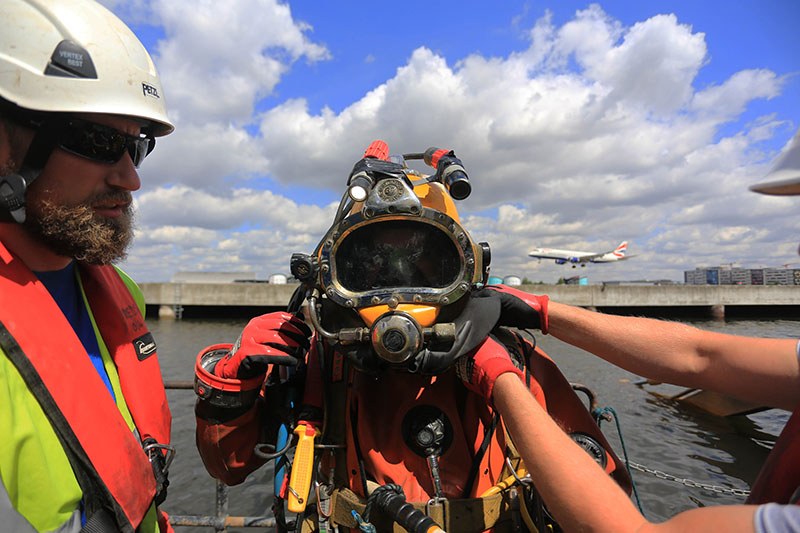Clearing munitions to support dredging operations
The consequences of failing to factor in unexploded ordnance (UXO) services during dredging operations can be catastrophic.
What is dredging?
Dredging is the process of removing sand, sediment, and other debris from bodies of water such as rivers and harbours. As sand and silt naturally wash downstream, this sediment can slowly fill up channels and harbours.
Dredging is a solution to this problem.
How can dredging support infrastructure development?
The sediment removed during the dredging process can be repurposed for land reclamation. This means the dredging process enables the creation of new land to support infrastructure development projects.
This process is common in locations including the Netherlands, Hong Kong and Singapore.
How do SafeLane’s marine unexploded ordnance services support dredging operations?
Unexploded ordnance (UXO) poses a threat in the marine space. Munitions, bombs, grenades and sea mines may have been used historically to target a harbour and docks, and ordnance including chemical munitions have been dumped at sea.
It is impossible to determine exactly how much has been dropped or dumped - or where it has all ended up. As time goes by, so unexploded ordnance becomes less stable and therefore more dangerous. This is especially true when it comes to water exposed munitions.
The UXO threat in the marine space poses a risk to:
- dredging operations
- construction projects
- fishermen
- marine life
- oil & gas operations
- cable and pipe lay operations
- offshore renewables
Without surveying for UXO and, if needed, removing any explosive threats detected, it is impossible to tell if sand and sediment being removed during dredging is contaminated with munitions.
The consequences of not factoring in unexploded ordnance risk mitigation services ahead of dredging operations can be catastrophic.
The catastrophic impact of not factoring in the UXO threat when dredging
People have been killed by munitions that have exploded when uncovered during both dredging and construction works. In addition, people have been maimed and killed where untrained individuals have attempting to handle explosive threats they have encountered.
In October 2017 in Kuala Lumpur, Malaysia, UXO from WWII blew up on a construction site killing 1 member of staff and injuring 2 others. In December last year suspected ordnance was brought up in nets beneath a fishing boat off the Norfolk coast and exploded, critically injuring those on board.
Other risks of UXO in the marine space include:
- cost and delay implications to a project
- asset loss
- environmental damage
- reputation loss
SafeLane's marine team has been keeping people safe during dredging projects for over 30 years in both British and international waters.
Have you factored in the UXO risk for your next dredging project?
For expert, professional advice contact SafeLane's Marine team today for a free initial consultation.
For your next project, contact SafeLane


